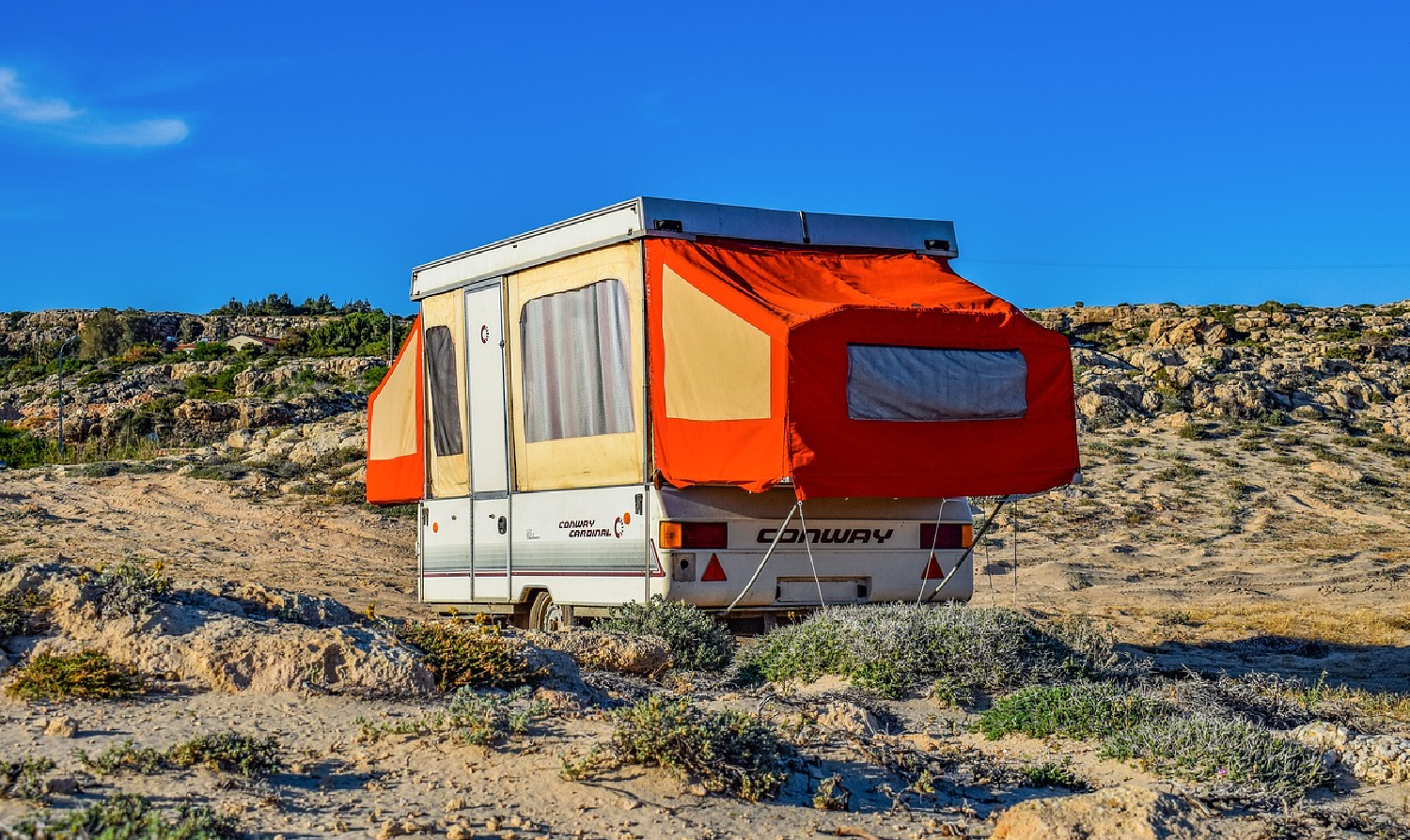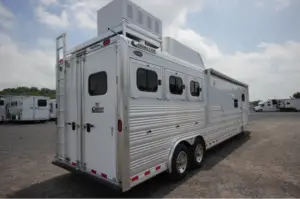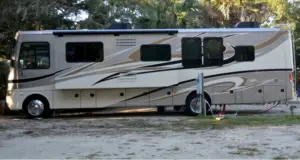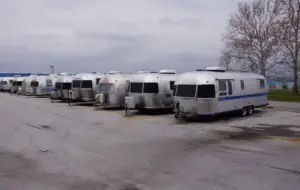It’s great having a pop-up camper. It’s a kind of recreational vehicle detachable from the main motor, so you can store it in your garage or backyard when not in use.
However, there are more things to learn about pop-up campers than you may think. It would be best if you tow the camper to bring it with you safely and efficiently successfully.
What are pop-up campers, and why do I need to tow them?
Pop-up campers are a different kind of recreational vehicle that is completely detachable. When you intend on not using them, you can easily store them inside a garage or out in the backyard. Plus, they are easy to mount on your car and go places with them.
Most RVs are completely whole, and the inside amenities are included in the vehicle itself. The pop-up camper encases all your amenities like your living lounge, bathroom, and kitchen in its compartment.
They vary in size and weight, leading to many designs and models that have unique hitches and motors to operate. We’ll worry about that later, but for now, let’s answer the question of why you need to tow them.
It’s simple; you need to pull them from the back of your car or SUV to bring them with you. The complications start in how stable the hook can carry the camper while driving.
You see, when it’s not towed properly, the pop-up camper can move around quite frequently and may disrupt adjacent vehicles that can cause accidents. You don’t want that. Properly towing your camper with the right weight combinations and hitches is essential in safely moving around terrains and places.
The different weights
You must know the weights of your camper and the capacity of the main vehicle in carrying it. Not knowing the weight that your camper can carry will limit your experience by leaving a few gears behind.
Additionally, exceeding the maximum weight will force you not to bring as many people as you initially planned, especially when on vacation with the family. For reference, here are the different kinds of weights to know:
- Cargo Carrying Capacity or CCC– Is the allowable weight for cargo, equipment, gear, water, and other accessories.
- Gross Vehicle Weight Rating or GVWR– is the max weight your main driver can carry plus the people, hitch, and cargo.
- Gross Axle Weight Rating or GAWR– is what your vehicle’s axle can handle carrying.
- Unloaded Vehicle Weight or UVW– is what your camper weighs fresh out of the manufacturing plant.
For the specific weight of your particular camper, the numbers may vary a lot because many companies sell pop-up campers with different materials, shapes, and sizes. There are also three different variants in size, namely the small, medium and large sizes.
The average weight if all three are considered is 1,200 to 2000 lbs. The extreme ends can go from 800 lbs on the lighter side and 2,500 lbs on the heaviest size.
It’s best to check with a mechanic or call the official manufacturers themselves to check on the weight of your camper.
Can a regular car tow a pop-up camper?
Any vehicle can carry a pop-up camper, whether a regular four-seater car, down to the SUVs and minivans. Of course, you should consider the weight of the pop-up camper. But in the general scheme of things, it can carry a pop-up camper.
To be more practical, cars like a Volkswagen or the Mini Cooper obviously couldn’t tow anything for that matter.
A quick way to know if your vehicle can tow or not is to compare the camper’s weight to your hitch’s weight. There is a metric discussed later on about how you can check the different weight classes.
Still, if you hate math, the better and more official way of doing this is simply checking with the pop-up camper’s main branch to search for queries in its compatibility. There’s no harm in asking, but it’s generally an accepted fact that bigger cars should be able to tow campers with ease.
Different hitches
Let’s get straight to the point with arguably the most important part of the whole setup, the hitch. This is the thing that connects your car to your pop-up camper.
Without this, there’s no use for your camper, to begin with. But hitches don’t come in one package only. There are only two hitches you need to worry about, and they differ in slight occurrences, but the differences are big enough to separate the two for specific uses.
Bumper Hitch
Bumper hitches are attached to your bumpers, hence the name. These are the most common because they’re already mounted to the vehicle. The defining factor of this hitch is the ball that’s mounted on the center.
There is one other hitch that will be explained here that also has a ball, and this acts as a lock to secure the link between the car and the camper.
This hitch applies to almost any type of SUVs, vans, and even smaller cars that are towable because a built-in receiver is already placed for these vehicles.
Weight Distribution Hitch
This was the hitch when we mentioned that there is a similar ball-mounted hitch similar to the bumper. The similarities lie in the ball on the center, but the difference being two connectors that are placed in relative angles so the camper can move in a unified direction.
To understand what that means, the two links form an incomplete triangle that distributes the weight so that the camper won’t slide around when it’s too massive to drive straight, or the shape is not road-friendly to stay on the same lane.
The biggest advantage of weight distribution hitches is the increase in driving performance and comfort.
You don’t need to worry about slippages and your camper from moving in all sorts of directions because physics will do its work for you. This is a highly coveted type of hitch, and most people would recommend this over the bumper.
There are still more hitches.
Although there are more hitches found in the market, they don’t fit the need for an average camper because (1) they are highly specialized to do one thing, and (2) you don’t come across these hitches in typical hardware or auto dealership stores.
But for your reference, we’ll briefly explain what they are if you’re interested.
Gooseneck Hitch
This long and heavy-duty hitch is designed for towing trucks that weigh 20,000-30,000 lbs. Not the ideal hitch for your regular camper.
Pintle Hitch
These have robust rings to carry commercial vehicles like vans. Not ideal for your camper because of the design.
Fifth-wheel Hitch
Like the gooseneck but with a different design, the fifth wheel also carries truck-sized vehicles weighing over 20,000 lbs.
For ideal towing, we recommend the weight distribution hitch for obvious reasons.
As you can see, it increases mobility and driving performance that is suited for drivers who want to focus on the road while traveling. But generally, you don’t need one, and a bumper hitch is perfectly fine since it’s also engineered to feel safe while driving but not as much as the weight distribution hitch.
It’s important to prioritize safety and feel in driving than any modular setup that won’t do the job quite well on that front.
The Society of Automotive Engineers
We thought the information about hitches isn’t enough to give you the full outlook of what you should consider in your camper travels. The Society of Automotive Engineers made a metric that classifies each weight class attributed to the hitches you buy from hardware and auto shops everywhere.
Class I
Hitch weight: 100-200 lbs
Max towing weight: 1000-2000 lbs
Class 2
Hitch weight: 250-350 lbs
Max towing weight: 2500-3500 lbs
Class 3
Hitch weight: 350-500 lbs
Max towing weight: 3500-5000 lbs
Class 4
Hitch weight: Over 500 lbs
Max towing weight: 7500-10000 lbs
How this works is very simple. If your trailer weighs 1,000 pounds, you must buy a class 1 hitch. It’s often recommended to go for a higher hitch class to have the room to upgrade your pop-up camper.
Tips to practice safe and effective towing
It’s integral that you follow the necessary tips listed below to avoid accidents and road disruptions when driving with a camper. Towing is the most critical practice of ensuring your vehicle will have a prolonged life span before upgrading.
Never go beyond the speed of 60 mph. Most campers don’t have the tires to keep up with the higher speeds, and you may end up flatting your tire if you do so. Remember, you aren’t drag racing. Instead, you’re enjoying the lush sceneries and terrains of your travels, so go about it slowly.
Make sure you check all your tires and if they are properly inflated. It goes back to the previous tip that you don’t want to have deflated or busted tires.
Always put in mind that you’ll be out of the city for a while, and there are very few gas stations and tire repairs in the rich evergreens or wherever you’re going; Bottom-line is, you can never be sure about the availability of these stations, so it’s best to have your tires full of air as they can get.
Be mindful of other drivers’ safety. Signal in advance to let them know where you’re headed. It’s a courtesy to let them know so they can plan their next move as well. It’s hard for an SUV and Camper combo running around the highway. It’s appreciated when you properly follow the rules and avoid accidents from occurring.
It’s advised to drive on the right lane so other vehicles can drive past you in heavy traffic. It’s going to infuriate most drivers when you’re there chilling inside your car while the person at the back is late for an important meeting. So it goes without saying to be aware of others to prevent impatient drivers from causing accidents.
Watch for road signs and possible construction and school facilities so you can drive more vigilant and careful. Many tow drivers get pulled over because they drive too fast or maneuver their vehicles frantically, disrupting traffic flow.
Drivers of pop-up campers must be extra careful while driving around the vicinity. You can easily cause accidents and unnecessary traffic for everyone if you go absentminded on the road. Remember that you are not only carrying yourself and your vehicle but also another detachable interface that weighs thousands of pounds.
Additional tips for maintenance
Your pop-up camper can get warm when under the heat of the sun. Be wary of this and make sure to have ventilation to have a better experience when inside.
- Some campers are collapsible, which means seats, beds, and tables can be adjustable inside the camper, so you won’t need to bring additional weight. It’s best for cars on the smaller side, so you might want to consider buying one if you can’t add more weight to the trailer.
- During heavy rainfall, you should dry the awnings and canvases so that your camper won’t give a bad smell. It’s generally best to have them open for a few hours after the rain stops so you can have time to dry them for maintenance’s sake.
- Expect to have very little room when inside. Unlike the bigger and more expensive ones, the average camper can only fit 4-6 people. Knowing this can give you an idea of who to invite over trips to the lake or mountains. It’s a good heads up, especially when you’d have to leave someone out by not knowing your space’s capacity.
Final thoughts
That’s pretty much all you need to know about towing your pop-up camper. That’s a lot of information to suck in, but once you get used to it, there shouldn’t be any problems when on the road. Just remember the safety tips and the hitch classes when planning to go out with your trailer.
But there is one more tip we almost forgot to mention: having fun and enjoying your travels!





